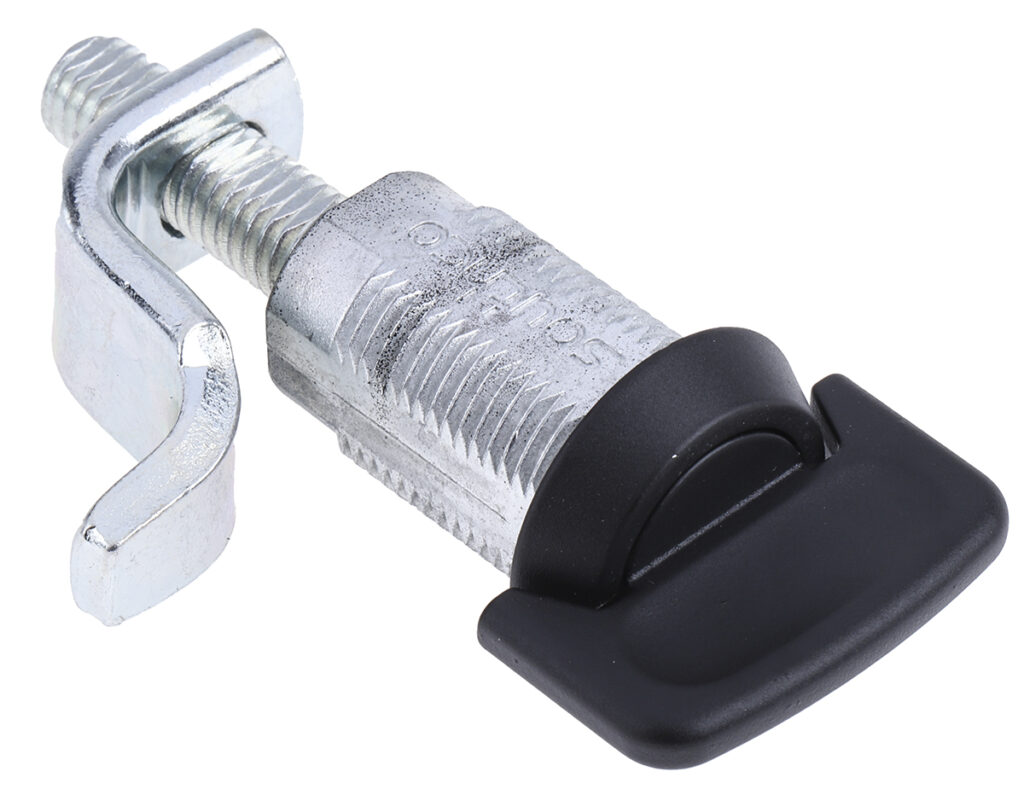
Introduction
In modern electronic and electrical assemblies, safety, accessibility, and durability play vital roles in ensuring reliable operation. One component that quietly supports these aspects is the cylindrical pressure catch. While often overlooked compared to larger components like circuit breakers, connectors, or relays, this small yet highly functional hardware device provides dependable closure mechanisms in enclosures, cabinets, and industrial housings. From electronic test equipment to consumer appliances, cylindrical pressure catches help maintain secure fastening, enhance user convenience, and protect sensitive electrical components from external factors.
What is a Cylindrical Pressure Catch?
A cylindrical pressure catch is a mechanical fastening device designed to hold doors, panels, or covers securely in place using spring-loaded pressure. As the name suggests, it features a cylindrical body with internal spring tension, which ensures the catch locks firmly and releases smoothly upon applied force. Unlike complex latching systems, these catches are compact, simple to install, and reliable in performance, making them a practical choice for both electronic and electrical enclosures.
Importance in Electronic and Electrical Systems
In electronics, small details often define the reliability of the entire system. Cylindrical pressure catches play an important role in areas where:
- Enclosures need frequent access – For example, control panels, electrical cabinets, or battery housings in industrial machinery where technicians must regularly inspect or replace components.
- Safety is critical – Protecting wiring, PCB boards, sensors, and power modules from dust or accidental exposure requires sturdy closure solutions.
- Aesthetic and compact designs matter – Consumer electronics, such as smart home hubs, IoT devices, or audio equipment, often incorporate sleek enclosures where traditional bulky latches would not fit.
By ensuring secure closures without the need for additional locking systems, cylindrical pressure catches improve efficiency in installation and maintenance.
Features of Cylindrical Pressure Catches
Modern cylindrical pressure catches are designed with advanced materials and engineering techniques. Some of the key features include:
- Spring-Loaded Mechanism: Delivers consistent pressure to keep panels closed, reducing risks of vibration-related loosening in electrical equipment.
- Durable Construction: Typically made from zinc alloy, stainless steel, or high-strength plastic to withstand mechanical stress and environmental exposure.
- Compact Design: Allows integration into slim or space-constrained electronics such as modular power supplies or compact circuit housings.
- Easy Installation: Can be mounted with minimal tools, saving time in large-scale electronic assembly lines.
- Versatile Use: Suitable for electrical cabinets, telecom enclosures, laboratory instruments, and even consumer hardware.
Applications in the Electronics Industry
The versatility of cylindrical pressure catches makes them indispensable across multiple domains of electronics and electrical systems:
- Telecommunications Equipment: Used in access panels of routers, network switches, and server racks where frequent maintenance is required.
- Power Distribution Panels: Ensuring doors of distribution boards, switchgear, and electrical cabinets remain tightly secured.
- Consumer Electronics: Offering discreet closure in audio systems, home automation hubs, and compact enclosures.
- Laboratory Instruments: Providing reliable fastening in oscilloscopes, power analyzers, and precision measurement devices.
- Industrial Automation: Installed in control stations, PLC cabinets, and robotic machine covers where vibration resistance is crucial.
In each application, the component protects wiring, connectors, PCBs, and other sensitive electronic elements from dust, moisture, or accidental disturbance.
Advantages of Using Cylindrical Pressure Catches
- Reliability in Harsh Conditions: With robust materials, these catches withstand heat, vibration, and electrical field environments.
- Reduced Maintenance: Fewer moving parts mean less wear and tear, lowering the risk of mechanical failure.
- User-Friendly: Quick-release action makes them highly convenient during inspections or part replacements.
- Cost-Effective: Affordable compared to complex locking systems while offering long service life.
- Adaptability: Compatible with multiple enclosure types, from industrial-grade electrical housings to delicate electronic casings.
How They Compare to Other Closure Systems
Traditional closure mechanisms like compression latches, toggle clamps, or keyed locks serve their purpose but can be bulky or costly for compact electronic devices. Cylindrical pressure catches provide a balance between functionality and simplicity, offering secure fastening without extra complexity. Their non-intrusive design also enhances airflow in electronic housings, preventing overheating of circuit boards or power modules.
Trends and Innovations
With the rise of smart electronics and miniaturized electrical systems, cylindrical pressure catches are being optimized further. Manufacturers now focus on:
- Lightweight Materials: Incorporating reinforced polymers for reduced weight in portable electronics.
- Corrosion Resistance: Specialized coatings that ensure longevity in outdoor electrical equipment like solar inverters or IoT gateways.
- Ergonomic Design: Smooth operation for technicians working with sensitive devices.
- Electromagnetic Compatibility (EMC) Integration: Preventing interference in high-frequency applications.
These trends highlight how even small components evolve to meet the increasing demands of the electronics industry.
Choosing the Right Cylindrical Pressure Catch
When selecting a cylindrical pressure catch for electronic or electrical use, consider the following:
- Material Strength: Stainless steel for industrial setups, lightweight alloys or polymers for consumer devices.
- Size and Fit: Ensure compatibility with the enclosure design and panel thickness.
- Load Capacity: Match the spring force with the weight of the panel or door.
- Environmental Conditions: Choose corrosion-resistant finishes for outdoor or high-humidity environments.
- Maintenance Needs: Opt for designs requiring minimal lubrication or adjustments.
By aligning these factors with the requirements of electrical enclosures or electronic devices, engineers can guarantee enhanced performance and durability.
Conclusion
Though small in size, cylindrical pressure catches provide big advantages in electronic and electrical applications. Their ability to secure panels, protect sensitive circuits, and simplify maintenance makes them essential across industries ranging from telecommunications to consumer electronics. With growing innovation in materials and design, they continue to evolve alongside modern technology.
For businesses and professionals seeking reliable fastening solutions, cylindrical pressure catches offer a proven, efficient, and cost-effective choice to keep electronic systems safe, organized, and future-ready.

